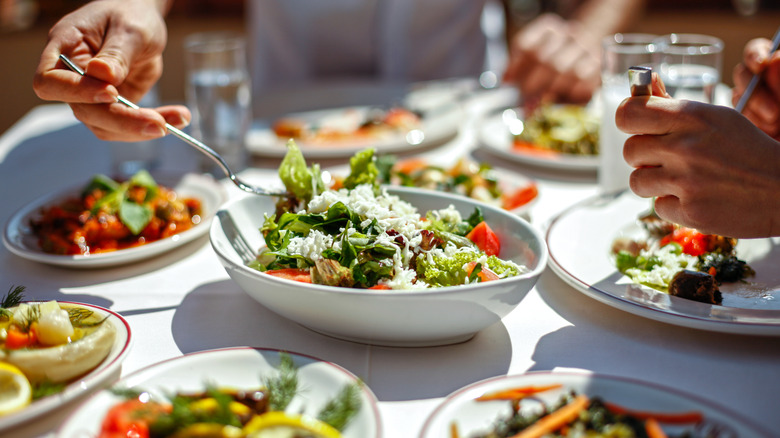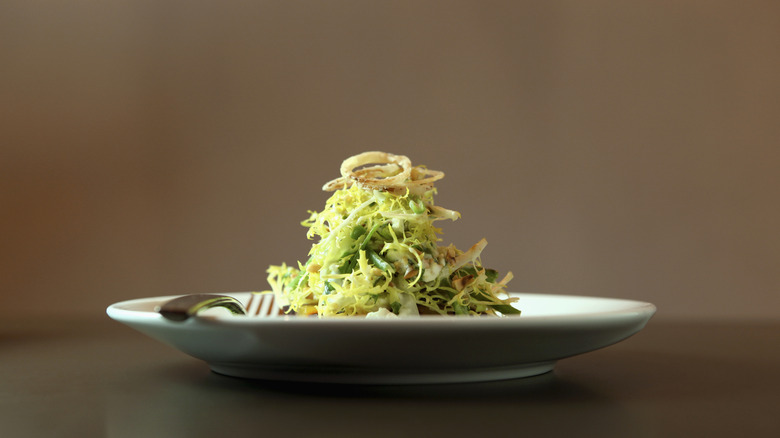How You Plate Your Salad Matters. Here's Why
Making a salad isn't just tossing some greens into a bowl — done right, it's more like assembling a tiny masterpiece. The trick? It's all in the plating. Whether you're working with a vibrant summer squash and basil burrata creation or your go-to mix of greens, how you stack, layer, and arrange everything can completely change how the dish feels and tastes.
Height, structure, and color aren't just buzzwords here; instead, they're the foundation of good plating. Stacking greens and layering toppings in the right order keeps textures intact and ensures every bite has the right balance of crunch, creaminess, and flavor. So, instead of dumping everything onto a plate like you're in a rush, start with a solid base, then layer thoughtfully for something that looks as good as it tastes. For instance, use brightly-colored greens as a base for salad, and mix it up with different structure and hues (like combining spinach and radicchio, for instance). Save some of the most eye-catching colors and ingredients for the very top, be it artisanal croutons, bright red tomatoes, or a scattering of feta.
Even the smallest details can elevate the experience, especially when it coms to toppings. Thinly sliced veggies or a final sprinkle of herbs can make a world of difference. A well-plated salad doesn't just look better — it feels better and sets the stage for a dining experience that's more than just fuel.
The art of a well-plated salad
Presentation can make or break a salad. When you build height, balance colors, and add thoughtful finishing touches, you're creating something that feels purposeful, not thrown together. Restaurants have this down to a science. They layer with intention, sprinkle garnishes like nuts or shaved cheese, and give each element its moment to shine. And then there's Pittsburgh's most iconic salad, which casually throws crispy French fries on top as if it were just a regular topping. Somehow, it works, bringing a mix of practicality and pure audacity that proves plating doesn't have to be boring to be good.
Color plays a huge role here, too. Bold hues — like shredded beets, vibrant carrots, or juicy tomatoes — signal freshness and make every bite more inviting. Don't forget about the dish, either; a clean white plate gives all those colors a spotlight, keeping the focus exactly where it should be on the food.
Pay attention to quality, too, as even the best presentation can't save limp greens. That's why knowing how to keep your greens fresh all week long is non-negotiable. Plating with care transforms a simple dish into something worth remembering — proof that salads can be just as satisfying as they look.

